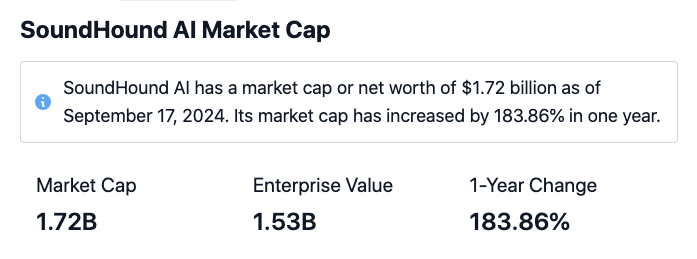20 Excellent Ways For Deciding On Best Stock Analysis Website Websites
20 Excellent Ways For Deciding On Best Stock Analysis Website Websites
Blog Article
Top 10 Suggestions For Evaluating Ai And Machine Learning Models On Ai Trading Platforms
In order to ensure that you have accurate, reliable, practical insights, it's crucial to examine the AI and machine-learning (ML) models employed by trading and prediction platforms. Poorly designed or overhyped models can lead to flawed predictions as well as financial loss. We have compiled our top 10 tips for evaluating AI/ML-based platforms.
1. Know the reason behind the model as well as its approach
Objective: Determine if the model was designed to be used for trading short-term or long-term investments, or sentiment analysis or risk management.
Algorithm transparency: Make sure that the platform provides the type of algorithms used (e.g., regression or neural networks, decision trees or reinforcement learning).
Customizability. Check if the model's parameters can be adjusted to fit your specific trading strategy.
2. Analyze model performance measures
Accuracy. Examine the model's ability to forecast, but do not depend on it solely, as this can be false.
Accuracy and recall: Examine how well the model can identify real positives (e.g., correctly predicted price movements) and reduces false positives.
Risk-adjusted return: Determine whether the model's predictions result in profitable trades after adjusting for risk (e.g. Sharpe ratio, Sortino coefficient).
3. Make sure you test the model by using backtesting
Performance from the past: Retest the model with historical data to determine how it performed under different market conditions in the past.
Tests with data that were not being used to train: To avoid overfitting, test the model with data that was not previously used.
Analyzing scenarios: Examine the model's performance in different market conditions.
4. Make sure you check for overfitting
Overfitting Signs: Look for models which perform exceptionally well when they are trained, but not so with untrained data.
Regularization: Check whether the platform employs regularization techniques such as L1/L2 and dropouts to avoid excessive fitting.
Cross-validation (cross-validation): Make sure your platform uses cross-validation for assessing the model's generalizability.
5. Examine Feature Engineering
Relevant features: Check if the model uses meaningful features (e.g. price, volume, technical indicators, sentiment data macroeconomic factors, etc.).
Choose features carefully It should include statistically significant data and not irrelevant or redundant ones.
Updates to features that are dynamic: Determine if the model can adapt to changing market conditions or the introduction of new features in time.
6. Evaluate Model Explainability
Interpretability - Ensure that the model offers an explanation (e.g. value of SHAP and the importance of features) for its predictions.
Black-box models can't be explained: Be wary of platforms with complex algorithms including deep neural networks.
A user-friendly experience: See if the platform can provide useful insights for traders in a way that they understand.
7. Assessing the model Adaptability
Market changes - Verify that the model can be adjusted to the changes in market conditions.
Continuous learning: Ensure that the platform is regularly updating the model by adding new information to enhance the performance.
Feedback loops: Make sure the platform is incorporating feedback from users or actual results to help refine the model.
8. Be sure to look for Bias and fairness
Data biases: Ensure that the data used in training are valid and free of biases.
Model bias: Determine if the platform actively monitors and corrects biases within the predictions of the model.
Fairness. Make sure your model isn't biased towards certain stocks, industries or trading strategies.
9. The computational efficiency of an Application
Speed: Check if your model is able to make predictions in real time or with minimal delay, particularly when it comes to high-frequency trading.
Scalability - Ensure that the platform is able to handle large datasets, multiple users and not degrade performance.
Resource usage : Determine if the model is optimized in order to utilize computational resources efficiently (e.g. GPU/TPU).
Review Transparency and Accountability
Model documentation: Make sure that the platform offers comprehensive documentation on the model's structure, its training process as well as its drawbacks.
Third-party audits: Determine whether the model was independently verified or audited by third parties.
Error Handling: Check if the platform contains mechanisms that detect and correct errors in the models or in failures.
Bonus Tips
User reviews and case studies: Research user feedback and case studies to gauge the model's real-world performance.
Trial period - Try the demo or trial for free to test the models and their predictions.
Support for customers: Make sure that the platform can provide an extensive customer service to assist you solve any product-related or technical issues.
Check these points to evaluate AI and ML stock prediction models to ensure that they are reliable and clear, and that they are aligned with trading goals. Follow the best trader ai review advice for blog info including ai copyright trading bot, ai for investing, ai investing, investment ai, ai chart analysis, stock market software, trader ai app, ai based trading platform, chart analysis ai, trader ai intal and more.
Top 10 Tips To Assess The Scalability Ai Technology For Predicting And Analyzing Trading Platforms
To make sure that AI-driven trading platforms and prediction systems are able to handle the growing quantity of data, user demands and market complexity it is vital to determine their scalability. Here are 10 top tips for evaluating scaling.
1. Evaluate Data Handling Capacity
Tips : Find out if the platform has the capability to analyze and process large datasets.
The reason: Scalable systems need to manage data volumes that are increasing with no performance loss.
2. Test the Real-Time Processing Capabilities
Tips: Make sure you check the platform's ability to handle real-time information streams, such live stock prices, or breaking news stories.
Why: The real-time analysis of trading decisions is crucial since delays can cause you to missing opportunities.
3. Check for Cloud Infrastructure and Elasticity
TIP: Check if the platform uses cloud-based infrastructure (e.g., AWS, Google Cloud, Azure) and can scale resources dynamically.
Cloud platforms provide flexibility, allowing systems to expand or contract according to demand.
4. Algorithm Efficiency
Tips: Evaluate the computational power (e.g. deep-learning, reinforcement learning) of the AI models used for prediction.
Why: Complex algorithms can become resource-intensive, so optimizing them is crucial to scalability.
5. Examine Parallel and Distributed Computing
Check to see if your platform supports the concept of distributed computing or parallel processing (e.g. Apache Spark, Hadoop).
The reason: These technologies enable faster data processing and analytics across multiple nodes.
Examine API Integration & Interoperability
Tip: Check the integration of the platform with external APIs.
Why? Seamless integration allows the platform to be adapted to changing trading environments as well as data sources.
7. Analyze User Load Handling
Use a high-traffic simulation to see the response of the platform under stress.
The reason is that a platform that is scalable must be able to sustain its performance as the number of users increases.
8. Analyze the model retraining and adjustability
Tips: Check how often and efficiently AI models are trained with new data.
Why? Markets are constantly shifting, and models must to evolve quickly to stay accurate.
9. Verify fault tolerance and redundancy
Tips - Ensure that your system has failover and redundancy features to handle hardware or software failures.
Why: Downtime is costly for trading. Fault tolerance is therefore vital to scaling.
10. Monitor Cost Efficiency
Tip: Analyze the cost of scaling the platform, which includes cloud resources, data storage and computing power.
Why: Scalability should not result in an unsustainable price So balancing performance and expense is essential.
Bonus Tip: Future-Proof
Platforms must be designed to accommodate new technologies, such as quantum computing and advanced NLP. They must also adapt to regulatory change.
These factors can help you assess the impact of AI-based stock prediction as well as trading platforms. They will also ensure they're reliable, efficient capable of expansion and are future-proof. View the top ai options trading for blog examples including copyright advisor, copyright financial advisor, best ai stock trading bot free, ai hedge fund outperforms market, ai trading, ai stock trading bot free, ai trading software, best stock analysis website, stocks ai, ai stock trading bot free and more.